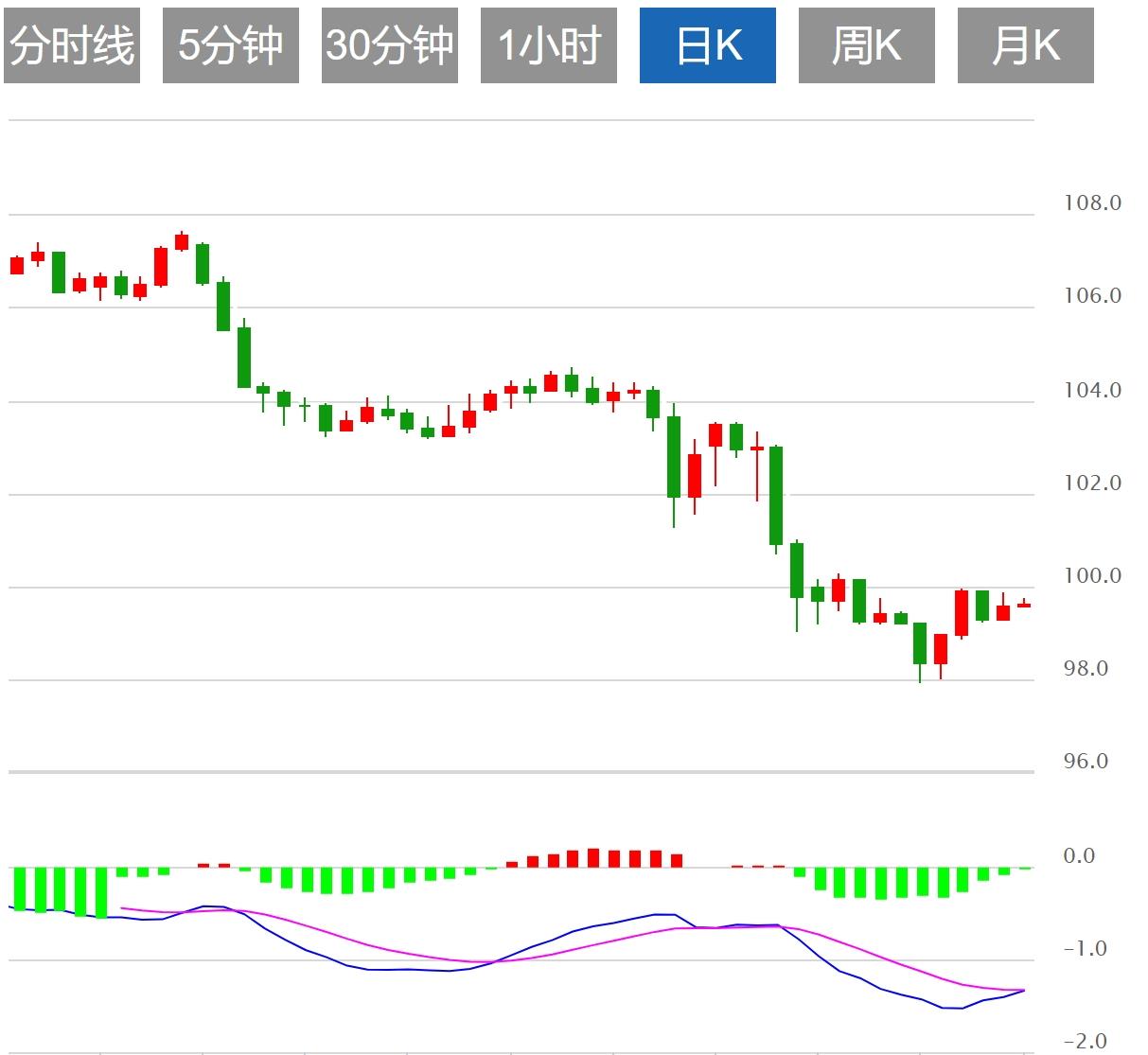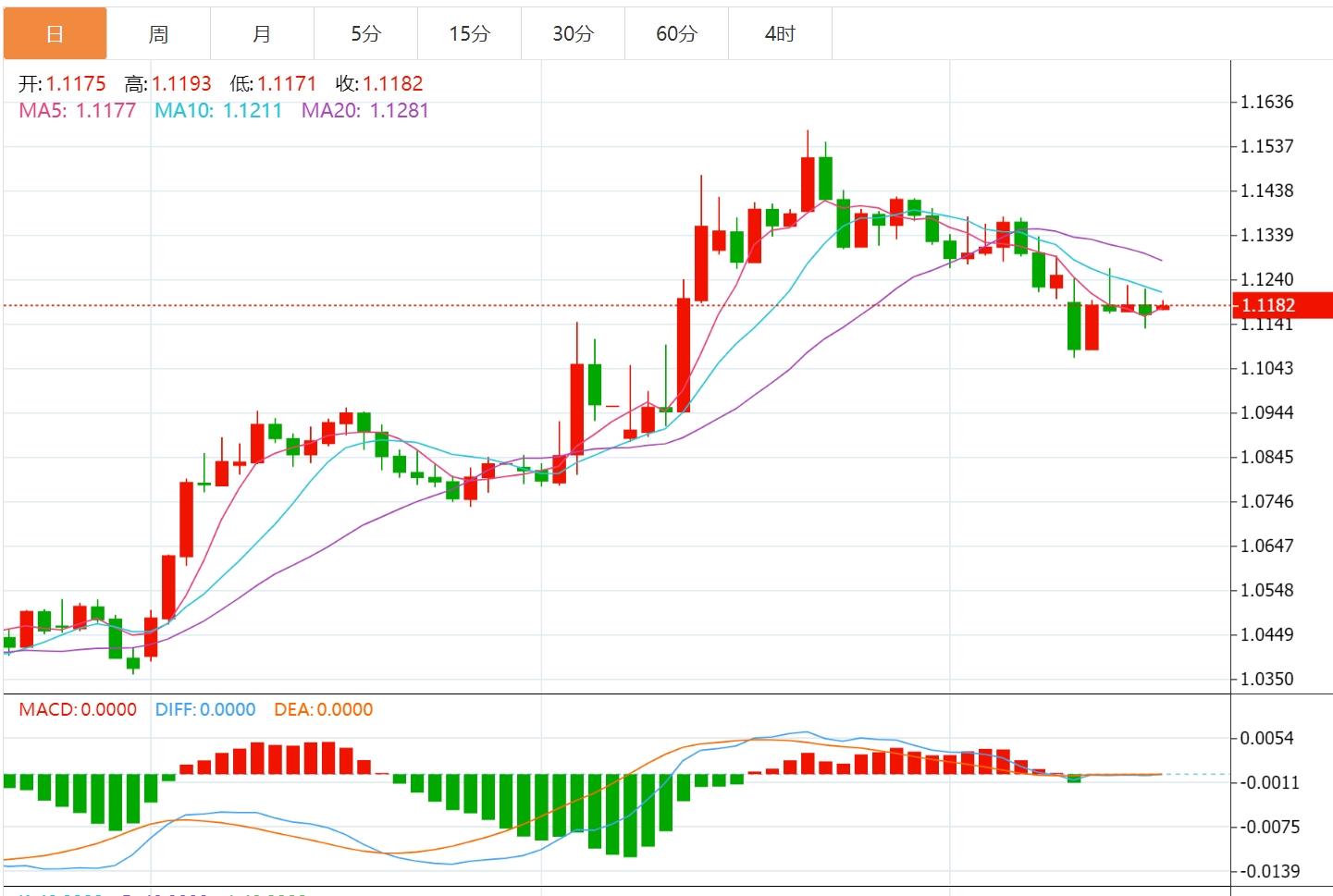Wonderful introduction:
Walk out of the thorns, there is a bright road covered with flowers; when you reach the top of the mountain, you will see the cloudy mountain scenery like green clouds. In this world, a star falls and cannot dim the starry sky, a flower withers and cannot desolate the whole spring.
Hello everyone, today XM Foreign Exchange will bring you "[XM Foreign Exchange Market Analysis]: The US dollar index has seen long and short tug-of-war, and Fed officials have spoken out intensively this week." Hope it will be helpful to you! The original content is as follows:
On the Asian session on Monday, the US dollar index hovered around 100.77, and after a busy week of economic data, there are only a few releases that may have an impact this week. Traders will not have much to refer to early in the week, but they will focus on Thursday’s weekly unemployment benefits applicants, Thursday’s S&P global PMI and Thursday’s April existing home sales data, and Friday’s new home sales data. This week, the market will also hear speeches from almost all Federal Reserve members, and investors need to focus on it.
U.S. dollar: As of press time, the US dollar index hovered around 100.77, and the US dollar strengthened last Friday, rising for the fourth consecutive week. The latest round of economic data shows import prices rebounding in April, while consumer confidence remained sluggish in May, as concerns over the impact of President Trump's trade policy have increased. Current market sentiment towards the US dollar is undergoing a complex shift. Traders' behavior showed obvious caution, and after U.S. economic data fell short of expectations, the market is re-adjusting expectations for the Fed's interest rate cut schedule. Judging from the technical chart, the US dollar index hit a low of 97.92 in April 2025 and then rebounded. The current price encounters a key resistance level near 101, which coincides with the long-term downtrend line. The K-line pattern shows that the index has recently formed a consolidation pattern. The RSI indicator is located near 50, in the neutral area, with no obvious overbought or oversold signals.



Bruno Bonaire, Secretary-General of the French Investment General Secretariat, recently told the French media that the uncertainty caused by the current US government's tariff policy will ultimately drag down global investment in the United States. AFP quoted Bonaire as saying, "The decision made by the US government is completely unsure... it is completely unpredictable." The uncertainty brought by the Trump administration will put pressure on companies. In fact, France's investment situation in the United States "has cooled down a lot." Recently, French Minister of Eric Lombard talked about the current US government forcing enterprises through high tariffsIn his approach to investing in the United States, the industry emphasized that "Europe's politics and regulation are stable and they have a very sound legal system." European Central Bank President Lagarde recently said in an interview with the French Sunday Tribune: "We see that the rule of law, courts and trade rules in the United States are challenged, and uncertainty continues to exist." World Trade Organization Director-General Ivera said in Tokyo, Japan on the 13th that the US tariff measures pose a challenge to global trade.
The poll results released by Kyodo News on the 18th showed that about the performance of US President Donald Trump in the second term, about 81% of the people in Japan now feel "more anxious than hope". Regarding the reasons for feeling "anxious" about this US administration, 42% of the above-mentioned 80% of the respondents chose the impact of Trump's tariff policy on free trade, and 41% chose the unpredictability of Trump's own style of conduct. This poll on the Japanese people's views on international affairs was conducted from March 4 to April 14, covering 3,000 people over 18 years old in 250 regions of Japan, and finally recovered 1,867 valid answers.
ECB Management Committee Wen Shi said that as the global trade war may lower consumer prices, the ECB must be ready to lower interest rates to "slightly below" 2%. "If I look at the economy — the shock and the uncertainty of growth we face — there might be reason to give moderate support," he said, adding that it could mean lowering interest rates for the central bank's key deposit arrangements to "slightly below 2%. Since June last year, the ECB has cut interest rates seven times, lowering the benchmark interest rate from 4% to 2.25%. The market currently expects that the ECB will cut interest rates by 25 basis points in June and another 25 basis points in the second half of this year, reducing the deposit arrangement interest rate to 1.75%. Wensch said he was “not shocked” when he saw the market forecast. Wensch's comments on supporting further rate cuts are very different from his previous relatively hawkish stance. In February this year, he said that the ECB should not "sleep the interest rate to 2% without thinking."
European Central Bank President Lagarde said that the recent appreciation of the euro against the US dollar is the result of the unstable policies of US President Trump and also an opportunity for Europe. "It's impressive that in times of uncertainty, we should usually see a sharp appreciation of the dollar, but the result is the opposite: the euro-dollar appreciation." "This is counterintuitive, but it's reasonable from the uncertainty and loss of confidence in U.S. policy in certain areas of the financial markets." Lagarde reiterated his previous comment, saying, "This is not just a threat, but an opportunity" and "leaders must speed up the deepening of the EU." She said: “When we see the rule of law, the judicial system and trade rules in the United States are questioned, the United States’When uncertainty is continuous and changing every day, Europe happens to be seen as a region of economic and political stability, with a solid currency and an independent central bank. ”
Goldman Sachs rate strategists raised their forecasts for the year-end U.S. Treasury yields. Strategists such as Goldman Sachs George Cole wrote in a Friday report, “The benchmark situation for the Fed rate cut is delayed and the pace is slowing, while the trade-off between economic growth and inflation remains challenging, and taking into account the broader fiscal trends, all of which support us to raise U.S. Treasury yields "Goldman Sachs now expects the yield on the two-year U.S. Treasury bonds at the end of 2025 to be 3.90% (previously expected to be 3.30%); the yield on the 10-year U.S. Treasury bonds at the end of 2025 to be 4.50% (previously expected to be 4.00%).
Morgan Stanley Investment Management, AQR Capital Management, Bank of America and Flanders Companies like Clin Templeton are betting that the situation may eventually turn to stocks favoring developing markets. Bank of America strategist Michael Hartnett called them the "next bull market." AQR predicts that in the next five to 10 years, their annual return will be close to 6% in local currencies, surpassing the 4% gain in U.S. stocks in the U.S. dollar. The S&P 500 has performed mediocrely this year, while similar indexes in emerging markets have risen 10%, igniting market hopes Hope: The huge gap between US stocks soaring by more than 400% in the past fifteen years and emerging market stocks rose by only a slight 7% may end. The drivers behind this include the weakness of the US dollar, the violent fluctuations in the S&P index, and the risk-averse status of US bonds being questioned. With the Trump administration launching a trade war, investors are increasingly looking beyond the United States. Christy Tan, an investment strategist at Franklin Templeton, said she strongly recommends emerging market bonds as a substitute for US bonds, "We believe that the US market is no longer special for the time being. ”
Fitland's $2.3 trillion fixed income business director said that as Trump's trade war subverts economic outlook, Fed policymakers' goal of curbing inflation while maximizing employment is "pulling them in a completely different direction." Robin Foley said the Fed "has good efforts to fight inflation, but employment remains to be seen." She added that the central bank is in the process of "Difficulty." Foley's comments come as the Federal Reserve suspended its interest rate cut cycle this year, which began in 2024, as Trump's tariffs could exacerbate inflation and hit the job market. Foley noted that market participants' expectations of interest rates have experienced "very unstable" changes in the past year. Futures market transactions indicate that investors expect the Fed to resume interest rate cuts in September, much later than forecasts at the beginning of the year.
Takuji Aida, an economist at the Credit Bank of France, said that as the Japanese economy shrank in the first quarter of 2025, the Bank of Japan may not raise interest rates until January next year. The Bank of Japan needs to confirm that the economy has not deteriorated between July and September and update its forecasts in January next year before it can resume interest rate hikes. It is expected that Japan's real GDP will shrink by 0.4% in the second quarter, causing Japan to fall into a technical recession. The Bank of Japan seems to be unable to continue the mistake of hikes this year, which has made financing difficult for corporates and put downward pressure on domestic demand.
The above content is all about "[XM Foreign Exchange Market Analysis]: The US dollar index has seen long and short tug-of-war, Fed officials have spoken out intensively this week". It was carefully compiled and edited by the XM Foreign Exchange editor. I hope it will be helpful to your trading! Thanks for the support!
Share, just as simple as a gust of wind can bring refreshment, just as pure as a flower can bring fragrance. The dusty heart gradually opened, and I learned to share, sharing is actually so simple.